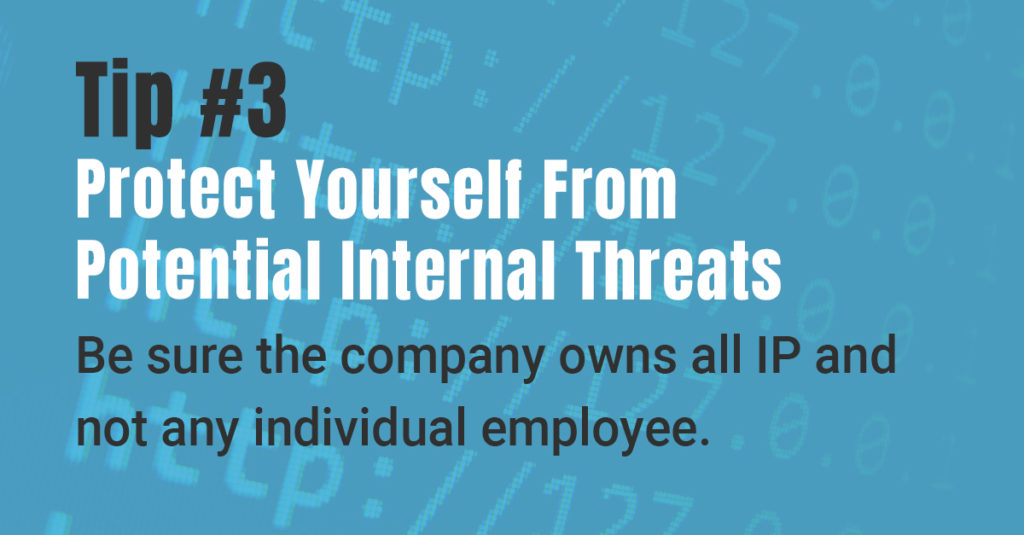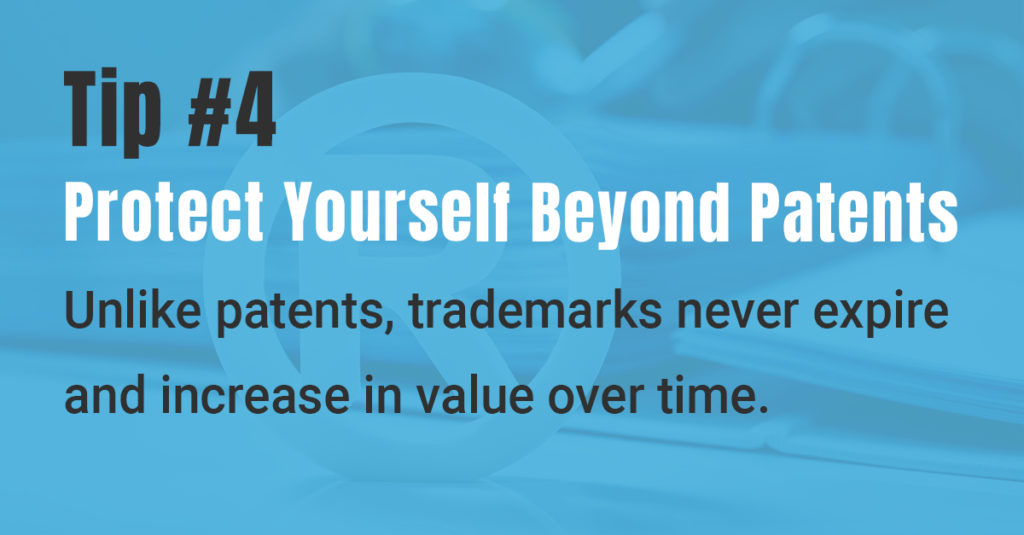Worried About Product Copycats? 5 Patent Tips to Get Ahead of the Fast Followers
First there was Crocs, then along came Jibbits. Uber was quickly followed by Lyft. Don’t even talk about how many copycats PopSocket earned itself in the course of weeks.
When your idea is really, really good, it’s almost inevitable that someone is going to copy it. Retroactive legal action is difficult and expensive, so how can you get ahead of product copycats, knockoffs, and fast followers?
There’s no silver bullet, but there are some sure-fire strategies to help you get ahead of these wannabes, fast.

1. The More Patents, the Better
Have you updated your patent portfolio recently? Intellectual property (IP) protection is key to distancing yourself from fast followers, as you protect not only your core technology but any new technology that you develop as well.
Take, for example, an innovative company we all know from 20 years ago, TiVo. The first DVR, you could simply plug it in, fast-forward, rewind, and skip over all the commercials in your favorite show.
TiVo IPO’d in 1999 with one patent. The company had 5.36 million subscribers in January 2006, which fell to 2.3 million over the next six years.
A separate company, Universal Display Corporation, IPO’d in 1996 with six patents, added another 18 patents within a year, and now have more than 160 patents. In 2006, the company boasted $11.1 million in sales, which grew to $61 million by 2011.
One could argue that TiVo’s inability to license out its technology led to decreasing sales, as they were not forcing customers to license strictly from TiVo. Any company could license the technology from someone else, or develop it themselves.
Universal Display Corporation, however, had a broad patent portfolio that really forced clients and customers to continue using those licenses. This prevented fast followers from jumping on the trend and taking their technology for themselves.
A strong patent portfolio — one that evolves over time as your company evolves — is crucial to success in a world filled with copycats.

2. Protect Every Little Thing
One company that protected its IP thoroughly enough to win a famous case in the toy industry? Mattel.
If you were to take a look at a Bratz doll and a Barbie doll side by side, you likely would notice some key differences. Namely, Bratz dolls are a little edgier, a bit more scantily clad than their Barbie counterparts. However, Bratz was developed by a former Mattel employee and key qualities and features are exactly the same between the two, including some of the dolls’ proportions.
Because of this, Bratz lost a court battle with Mattel, thanks in part to Mattel’s robust intellectual property portfolio. Mattel is an excellent example of a company that’s protected every little feature of its product.

3. Protect Yourself From Potential Internal Threats
Note that the Bratz doll was created by a former Mattel employee. This just underlines how important it is for your co-founders and employees to assign IP rights to your company so that the company owns all IP, regardless of who comes and goes through your product development team. With a robust IP assignment policy, even if a co-founder eventually leaves and attempts to take IP elsewhere, the company and other co-founders are protected.

4. Protect Yourself Beyond Patents
As technology changes, patents tend to lose value over time and are eventually worthless upon expiration, so you must continue revamping your patent portfolio. However, there is no expiration date on a trademark and, as you sell more products and establish your brand, your trademark increases in value over time.
Take, for example, Dolby. The company continually develops new technology and licenses out its technology to different companies, requiring those licensees to add the Dolby logo to their products. Over time, consumers began to recognize the Doby logo as synonymous with good value and good technology, which benefits both Dolby and those licensing its technology, help to protect Dolby from any fast followers.

5. Put an Emphasis on Long-Term Protection
The key to preventing fast followers is focusing on portfolio development in its entirety, and not just protecting your initial technology.
If you only have one patent and think that’s enough, you’re going to be sorely mistaken when you create new technology over the next several years and realize that technology might not be protected.
With the right safeguards in place, you can extend your protection and your ability to license your technology throughout the years. Then, if a fast follower jumps in and tries to copy your work, you’re able to enforce patents, trademarks, and copyrights.
The best way to go about this?
- When you go into product development, think three or five years and multiple iterations of your product ahead.
- Talk to your product development team about what makes your products different from competitors’ products and protect those aspects.
- Strive to be an innovative company not only when you’re first getting your start, but forever, and likewise protect your innovations and brands not only when you start, but as you continue to develop new products.
If there’s one thing you can’t afford to let fall to the wayside when you have an innovative company, it’s protecting your ideas through IP.
Someone Knocked Off My Product… Now What?
Someone knocked off your product. Congratulations! You have a successful product that’s selling — so much so that other people have taken the time to copy it.
However, you’re now losing money that should be in your pocket. To top it off, your new competitor has copied your product with low-quality goods and slapped your branding on the product, tarnishing the reputation you’ve worked hard to establish.
What’s the appropriate way to respond?
Let’s look at the process of how you should deal with counterfeit goods.
How Do I Find Out If My Product or Process Was Knocked Off?
Unfortunately, you won’t know someone is trying to knock off your successful product until the fraudulent products are already in circulation.
In our experience, most companies find out that there are counterfeit goods in the marketplace by seeing the counterfeit or infringing products for sale on popular online retailers. Often, a potential purchaser will reach out and inquire why a product is being sold at a discount in another location. At that point, the client knows that they are competing with low-cost, low-quality counterfeit goods.
Should I Worry About My Product Being Knocked Off?
Most of the time the answer is YES! Other times, however — and this might be tough to swallow — you might not want to worry about a knockoff.
For example, perhaps you see that someone has knocked off your product in a country you have no plans to enter. With a large expense involved in removing the counterfeit products from the market, you may decide it is financially prudent to save the enforcement expense in this country at this time and use those funds it to shore up your sales and/or protection in the markets you’re currently selling within.
In such an instance, you’re comfortable having a larger expense in dealing with the counterfeit products at a later date when you decide to enter that market.
When dealing with counterfeiters, taking a page from the playbook of luxury brands like Louis Vuitton, Coach, and Yves Saint Laurent may be prudent. These brands, among others, have been dealing with knockoffs in foreign countries for decades. Though these worldwide brands do choose to frequently enforce their rights in numerous jurisdictions, they also understand it’s not worthwhile to sue every independent retailer and manufacturer.
With the proper marketing, sales, and customer education, customer loyalty can be instilled to a level where customers know the difference between a counterfeit and a genuine product and seek the real thing, even if that means paying four times (or more) the price of a lesser-quality knockoff.
Savvy ventures also know that if they spend all their time trying to prevent knockoffs from entering the market, they’ll be pulled away from what they do best: creating and selling high-quality products that their current customers and yet-untapped new customers desire.
The bottom line here? Know when it’s worth your time to pursue legal action. If it is, then make sure you…
Get It Right From the Beginning
If you have the right protections in place from the beginning, you can limit the effect that counterfeit products will have on your bottom line.
IP Protection: Patents, Trademarks, Copyrights, and Trade Secrets
Decisions on whether or not to pursue intellectual property (IP) protection on your products should occur during the product development phase. Understanding how your product differs from your competitors’ products and why your customers will choose to purchase your product instead of another product helps to identify the IP you should be protecting.
If it is determined that the product has IP that needs protection, a discussion with an intellectual property attorney should occur to determine what types of protection you should seek. Oftentimes, this discussion will aim to identify functional and aesthetic aspects of the product ripe for patent protection. Any patent protection should be sought prior to publicly disclosing the product.
If a decision is made to protect the product by seeking trademark protection on the brand and/or logo the product will be associated with, there’s a bit more leniency as to when protection must be sought. However, once a mark has been properly vetted, protection of the trademark should be pursued promptly to ensure the ability to secure future protection of the mark in foreign jurisdictions, should the need arise.
Copyrights may also be used to protect specific products. For example, software can be protected through copyright. Although copyright protection is frequently obtained upon creation, registering your copyrightable works should be part of your protection strategy.
Trade secrets — like the recipe for Coca-Cola or how the Google algorithm works — are a little more difficult to enforce because they require maintaining reasonable efforts to secure the continued secrecy. Also, if the confidential information is disclosed through violation of an agreement or through reverse engineering, the trade secret is effectively dedicated to the public. However, trade secrets may be a viable option to protect your product or system before launch.
There are numerous other protections that should be taken into account. Non-disclosure agreements (NDAs), securing web domains, and entering into non-competition agreements with key employees are just a few options companies can use to protect their products from the beginning.
OK, great, you sought legal protection from the start. So…
When Do I Take Action Against a Copycat?
Immediately.
Whether or not you are currently dealing with a knockoff issue, you should always develop a product protection strategy. Included in this strategy should be a process to address knockoffs.
This can entail using third-party providers to manage brand enforcement. Then, when that knockoff product comes out, you won’t be blindsided and can work with your IP attorney to implement your process to address the situation.
Will I Always Have the Right To Take Action?
You can always take action, but the prudent step is to determine should you?
For example, with trademarks, even if you might own a registered mark, if someone else used the same or a similar trademark first, their right may actually supersede your own. This is a unique situation, but highlights the need to conduct a thorough review of each situation before, for example, negatively blasting the other party via social media.
For those doing business in China, if you never registered your trademark with the Chinese government, you’ll have issues preventing Chinese companies from using your brand because trademark rights are only granted through official Chinese registration.
Speaking of China, knockoffs are a significant problem there for consumer goods. So, it’s vital you have protection in place to prevent the manufacture and sale of products in China and the shipment of products from China.
Yes, it can be expensive. But losing your business is worse.
Can I Handle a Knockoff Problem By Myself, Without a Lawyer?
In (not-so) strict legal terms: kinda-sorta.
For example, if someone is selling copycat devices with your trademark on Facebook in Ohio, you may be able to contact them directly with a demand to cease use. I recommend my clients take on these first initial contact when they are frequently dealing with counterfeit goods. I can provide them with the text to place in a general cease-and-desist communication to the infringing party.
More often than not, the infringement stops right away and the client has saved some legal fees. Over the course of time, these savings can be significant.
Clients can also internally handle the take-down processes involved with ensuring infringing activity is removed from online retailers.
If, however, the initial contact does not elicit removal of the infringing goods or the entity selling the knockoffs is a larger entity, a properly drafted cease-and-desist letter sent from your attorney may be the best course to ensure prompt action is taken by the opposing party.
Is It the Right Time to Switch IP Firms?
All lawyers may have an advanced degree behind their names, but lawyers and law firms aren’t one-size-fits-all. With any professional service — your accountant, your insurance company, your bank — you choose the service provider not only because it’s the right fit for your business needs, but also due to more subjective considerations such as your personality and values.
So what happens when your company has an IP portfolio with a firm that just doesn’t seem like a good fit anymore?
Maybe it’s a personality conflict. Maybe it’s something bigger, such as missing important deadlines or a lack of experience for your evolving IP needs. Still, you fear you’re in too deep; it seems like too much of a risk and hassle to change firms.
Is it truly too late to find a different solution? How do you know if it’s worth the effort to make the switch and, more importantly, how do you go about doing it?
Why Should You Switch Lawyers?
Changing lawyers or law firms is not uncommon. Our firm frequently consults with prospective clients who are looking for a second opinion. The reasons I see clients looking to change firms typically come down to a handful of issues.
- Conflict in communication style: Effective communication is everything in the law and if your preferences clash in unworkable ways, you may want to look for a firm with a more compatible communication style.Sometimes, this conflict arises due to a change at the law firm with a new attorney taking over the work. Or, the conflict may arise due to a change in the client, with a new CTO or Director of Engineering not meshing with their attorneys.Other times, the conflict may come down to basic reasons like the firm being unwilling or unable to use updated technology to communicate.
- Work product is produced at a slower rate than desired/instructed: Everyone gets swamped and attorneys and law firms can go through phases of managing workloads across a team. But work product consistently delivered past a stated deadline can create unmanageable delays for a client.
- The firm doesn’t have expertise in the information you’re seeking to obtain: If there’s one deal-breaker for your current attorney, this is probably it. Intellectual property can run the gamut from software to mechanical devices to biotech and pharma and it can be critical to work with an attorney having the appropriate background.Whether the attorney has the expertise necessary should be apparent during the initial consultation. However, over the course of time, an attorney may not keep up on the changing technology or industry trends, the expert attorney may leave, or the company may pivot to a new technology or enter a new industry via acquisition.
- Inadequate work: Whether it’s a miscalculation during the course of a litigation, a critical missed deadline, or a repeated legal error, a firm’s inability to properly address the client’s needs in an effective and efficient manner are frequent reasons we see clients seeking new counsel.Ultimately, you have the right to change law firms for any reason you like. However, even with the above situations, sometimes the best course of action may be to work things out with your current attorneys as institutional knowledge of how a client operates and why past decisions were made can be difficult to replicate.At the point where you’ve discussed the specific issue(s) you’re having with your current firm, proposed and requested workable solutions to resolve the problems, and are still seeing the same or similar issues, seeking new counsel that’s the right fit for your current needs is the proper course to take.
4 Do’s and Don’ts to Keep in Mind When Switching Lawyers
If you’re ready to move on, your goal is to fill in the gap of your current service with a firm that is more suited to your needs. Here are four things to think about:
- Where are you now and where do you want to go?
When switching firms, take into account not only the work you’re currently looking to move but also consider what legal work you intend to pursue in the future. Ensure that the firm can handle the current and future work, and if not, ask yourself if you’re fine engaging a new firm for the new work.For example, if you’re looking for someone to manage and enforce your current trademark portfolio but also intend on seeking patent protection for new products you’re developing, ensure that the firm can handle this future IP work. Or, you may be shopping for yet another firm in the near future. - Overall feel
Your personal preference is always a valid consideration when choosing a service provider to partner with. Is cost and attentiveness a top-level consideration? Or is the glitzy downtown office needed for your brand? Maybe you’re most comfortable with a solo practice?Whatever your comfort level, ensure that the firm is not only right for you right now, but also is right for you in the future. - Meet with several firms from personal referrals
When deciding to change law firms, obtaining referrals of firms from trusted, unbiased sources is a great route to take. Ideally, compare at least two firms. When you meet with them, ask them specifically how they handle the types of situations you’re having grievances with at your current firm. - Meet at their place
If possible, meeting with a potential attorney in person and at their law firm is a great way to get a sense of how their firm operates and can provide a strong sense towards understanding whether the firm will be a good fit. Remember, you’re engaging the firm and not just the attorney.
Just as important as the reasons to change attorneys are the reasons why you shouldn’t change:
- Don’t fire your attorney when you’re mad
Anger limits your reasoned decision-making ability. Yes, it may still make sense to move along after your anger has subsided. Just get to that point first before making any rash decisions. - Don’t switch for a friend
Unless your friend is truly a better choice for your needs, I would not advise changing law firms and losing the institutional knowledge associated with a prior firm solely based on a desire to work with a friend. - Don’t switch for a lower rate
Unless the lower rate comes with an improved legal staff, saving money typically shouldn’t be the only deciding factor. - Don’t switch until you have a new attorney
A lapse in representation can create legal headaches larger than the ones you’re currently dealing with.
The Step-by-step Guide to Making the Switch
Once you’ve decided it’s time to move on, there are several milestones along the way.
- Letter of engagement
Your new attorney will craft a letter of engagement outlining the terms of your representation. If there was an issue with your prior firm that you want to ensure your new firm addresses in a specific manner, you can spell this out in the initial engagement. For example, this is a great place to ensure specific projects will be performed on a flat-fee basis. - Inform your current counsel that you’ve decided to move on
Typically, this is handled by your new attorney to ease the transition to the new firm, but there are reasons why you’d want to be involved with informing your current counsel that you are transitioning your IP work to a new firm. These reasons can range from having a personal relationship with an attorney at the firm to continuing to utilize the prior firm for other types of legal work. You can have a discussion with your new attorney to determine the best method of informing your past firm how to move the work. - Coordinate due dates
Your case(s) may have quickly approaching due dates that your new firm may not be able to meet. Your new firm will ensure that any deadlines they are unable to meet will be handled by your prior counsel. Dates that are further out can be handled directly by your new attorneys once they are up to speed on your matters. - Transfer paperwork and e-files
This transfer is also handled with communication between your past law firm and the new attorneys you’ll be working with.
Even if a reason to switch firms hasn’t been identified, as your company and IP needs evolve, it’s a good business practice to check in with other firms to see how they operate.
At the very least, you may be able to improve your relationship with your current firm (and your bottom line) by implementing services or technology learned through a discussion with another firm. Other times, you may realize that you didn’t know what you were missing.
Regardless of the response, even if you are happy with your current situation, these discussions can lead you to a better relationship than what you are currently involved in. Carefully consider the possibility of staying with your current firm first; then decide if the situation warrants a change.
Questions about protecting your intellectual property? Schedule a consult.


